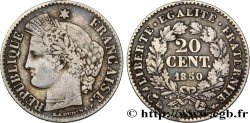fme_890111 - II REPUBLIC Médaille de l’imprimerie nationale
70.00 €(Approx. 72.80$ | 58.10£)
Quantity
Add to your cart

Type : Médaille de l’imprimerie nationale
Date: 1848
Mint name / Town : 75 - Paris
Metal : bronzed tin
Diameter : 36 mm
Orientation dies : 12 h.
Engraver FAROCHON Jean-Baptiste Eugène (1812-1871)
Weight : 15,91 g.
Edge : lisse
Puncheon : sans poinçon
Coments on the condition:
Belle patine marron hétérogène et légèrement irisée. Présence de quelques rayures et marques d’usure sur les hauts reliefs
Obverse
Obverse legend : RÉPUBLIQUE - FRANÇAISE.
Obverse description : La République assise à gauche de trois quarts de face, radiée et drapée tenant un faisceau de licteur, appuyée sur un gouvernail ; au second plan, une presse d’imprimeur.
Reverse
Reverse legend : LOIS ADMINISTRATIONS - SCIENCES ET ARTS // IMPRIMERIE / NATIONALE.
Reverse description : Légende circulaire et en deux lignes dans une couronne de chêne et de lauriers.
Commentary
Cette figure de la République est signée E. FAROCHON D’APRÈS LE SCEAU DE L’ÉTAT... elle rappelle le modèle de Barre pour l’Indochine, avec les tiges de riz.
Jean-Baptiste Eugène Farochon, né à Paris le 10 mars 1812 et mort dans la même ville le 1er juillet 1871, est un sculpteur et médailleur français..
Jean-Baptiste Eugène Farochon, né à Paris le 10 mars 1812 et mort dans la même ville le 1er juillet 1871, est un sculpteur et médailleur français..








 Report a mistake
Report a mistake Print the page
Print the page Share my selection
Share my selection Ask a question
Ask a question Consign / sell
Consign / sell
 Full data
Full data









